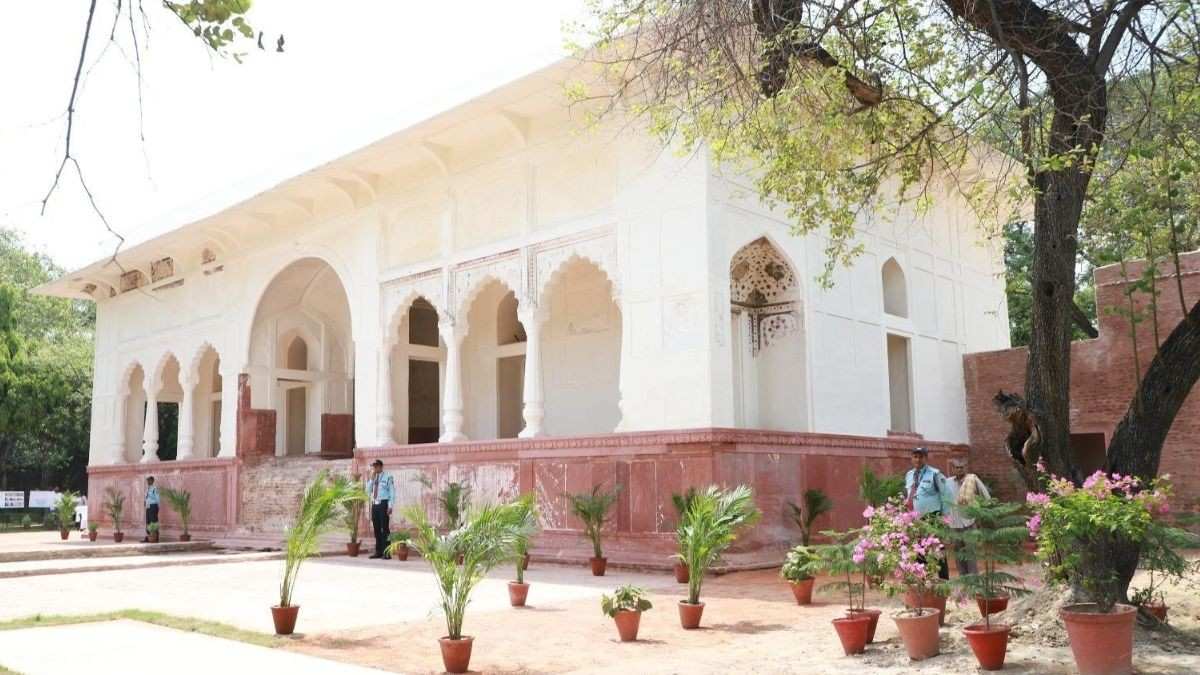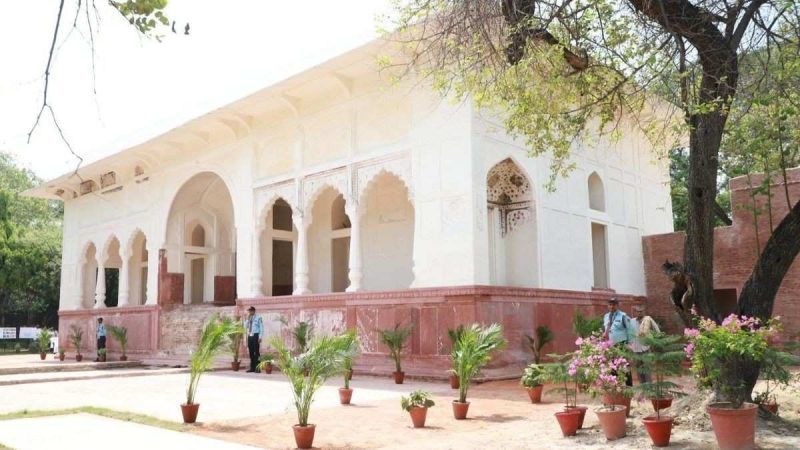Good news for all history buffs and lovers of the past! Delhi’s Mughal-era monument, Sheesh Mahal in Shalimar Bagh, has reopened to the public for the first time in 370 years after undergoing a major restoration project. The team has restored the main structure, while the restoration of the fountain is still in the planning stage.
Delhi’s Sheesh Mahal Reopened After Nearly 4 Centuries
Hon’ble Union Minister of Culture & Tourism, Sh.@gssjodhpur, @LtGovDelhi Sh. V.K. Saxena, & CM Smt. @gupta_rekha unveiled the restored medieval-era Sheesh Mahal & other heritage structures at Shalimar Bagh. Area MP Sh. @PKhandelwal_MP, VC DDA, DG @ASIGoI were also present. (1/2) pic.twitter.com/k7TJerR318
— Delhi Development Authority (@official_dda) July 2, 2025
The 17th-century Sheesh Mahal, located in Shalimar Bagh, has been restored by the Archaeological Survey of India (ASI) and reopened to the public after nearly four centuries. Built in 1653 during Emperor Shah Jahan’s reign, this ‘Palace of Mirrors’ holds great historical value. It was also the site of Aurangzeb’s first coronation in 1658. The reopening of this historical gem has once again brought attention to one of Delhi’s lesser-known monuments.
As per HT, while ASI handled the structural restoration, the Delhi Development Authority (DDA) took up the responsibility of constructing the gardens and transforming some areas for public use. It was officially unveiled on July 2 by Union Culture and Tourism Minister Gajendra Singh Shekhawat. Delhi Chief Minister Rekha Gupta and Lieutenant Governor Vinai Kumar Saxena were also present at the ceremony. Delhi Development Authority also shared the photos on their official X account.
Also Read: 10 Must-Visit UNESCO Forts In India To Experience The Rich History Of India
Two Cafes Inside Delhi’s Iconic Gem
According to HT, two smaller heritage buildings near the garden’s entrance have now been turned into cafes by the DDA. One is a Readers Cafe Corner designed as a literary space, while the other, Cafe Shalimar, will serve visitors inside the historic garden. The team has also restored a third, smaller cottage, which will now serve as an office.
DDA officials also said they have restored the ‘Baradari’ (a 12-door pavilion) using traditional materials and techniques. This includes surkhi concrete, lakhori bricks, and natural binders such as jaggery, bael fruit, and urad dal. Using such materials helps preserve the historical integrity of the monument while maintaining its strength
The restoration began in January 2024, with conservation work starting in June of the same year. While the Sheesh Mahal structure is now complete, the restoration of the fountain located in front of the building is still in planning. As per the report, Lieutenant Governor Vinai Kumar Saxena also urged Delhi residents to take responsibility for keeping these restored heritage sites clean and green.
Also Read: 7 Indian Monuments Built By Women That Are Still Standing As Timeless Symbols
This is great news! If you are in Delhi or planning to visit, we suggest you don’t miss out on visiting this beautifully restored monument from the Mughal era.
Cover Image Courtesy: Delhi Development Authority/ X
For more such snackable content, interesting discoveries and the latest updates on food, travel and experiences in your city, download the Curly Tales App. Download HERE. First Published: July 10, 2025 4:44 PM




